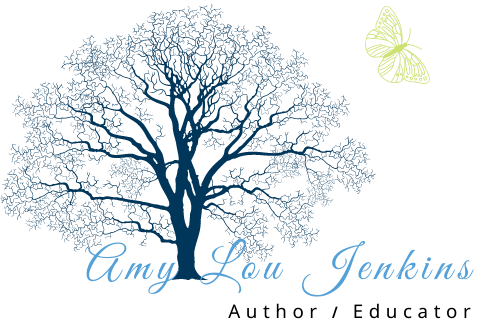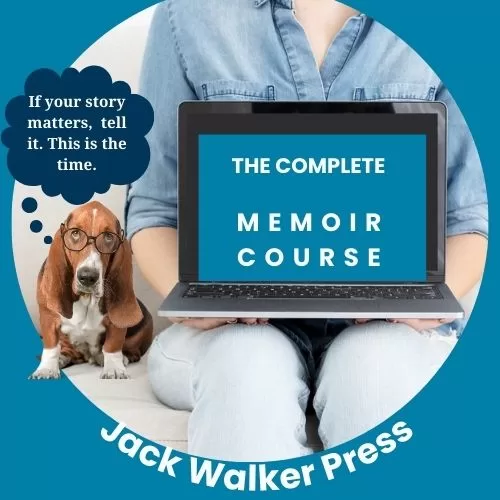
Three-Act Structure in Memoir Writing:
Your Life Story Becomes Resonant Art
Use the three-act structure in memoir to transform personal experiences into a universally resonant story. The timeless three-act structure can guide you to pen a compelling memoir to captivate readers with theme and narrative pull. Understanding this framework can elevate your storytelling, whether you're documenting a dramatic life change or a subtle shift in perspective.
The Three-Act Structure in Memoir: A Snapshot
Act One: The Setup
In the first act, you introduce readers to your world, setting up the main characters, context, and the central theme of your memoir. This section should establish your voice and present the inciting incident to hook the reader and start the narrative clock. As memoirist Mary Karr notes in The Art of Memoir,""the opening pages must kindle affinity, and pose questions the narrative answers later."
Examples of Inciting Incidents:
-
"The Glass Castle" by Jeannette Walls:
- Inciting Incident: Walls begins her memoir with an episode from her adult life in New York City, where she sees her mother rummaging through trash. In contrast, she is in a taxi on her way to a fancy event. This encounter prompts her decision to share her unconventional childhood story.
-
"Educated" by Tara Westover:
- Inciting Incident: Westover describes an accident involving her brother, Tyler. He decided to go to college. This event, coupled with her growing curiosity and yearning for education, sets her on the path of self-education and eventually formal schooling outside the confines of her isolated family life.
-
"Wild" by Cheryl Strayed:
- Inciting Incident: After her mother died, and her marriage ended, Strayed reaches a turning point of desperation and decides to hike over a thousand miles on the Pacific Crest Trail alone, despite having little experience in long-distance hiking. This decision propels her transformative journey.
-
"I Know Why the Caged Bird Sings" by Maya Angelou:
-
- Inciting Incident: Angelou recounts being sent along with her brother to live with their grandmother in rural Arkansas after their parents' separation. This move significantly impacts her early life and personal development, From here she explores themes related to identity, racism, and resilience.
These inciting incidents drive the narrative and deeply influence the themes and emotional arcs unfolding within the memoir.
Themes and Questions:
Consider the questions you want readers to explore. Is the journey about self-discovery, resilience, or perhaps the pursuit of a dream?
Narrative Pull: Hook readers with a compelling opening of promises—whether it's a vivid scene, a tantalizing question, or a poignant statement. Complications and conflicts often drive the reader to wonder what will happen next.
Act One makes a contract with a reader to establish the stakes and structure of the world, Here the reader decides if they want to take a journey with the narrator.
Establishing a strong voice in a memoir is essential for forging an authentic connection with readers. The voice captures the writer's unique personality and perspective and the persona they wish to convey—balancing authenticity with narrative craft. Is the point of view from an expert, a daughter, a parent, an artist, or someone else? The persona's story is both experiential and internal.
To create a distinctive voice, a memoirist expresses genuine emotions and insights. This involves selecting meaningful details, crafting vivid descriptions, and maintaining a tone consistent with the journey of the memoir. The writer's relationship with the reader depends on being a character worthy of the reader’s engagement. For example, in "The Liars’ Club," Mary Karr uses a raw and gritty voice authentic to the chaotic nature of her Texas upbringing, blending authenticity with an engaging narrative persona through humor and blunt realism. Similarly, David Sedaris in "Me Talk Pretty One Day" wields a witty, self-deprecating voice infusing levity into his stories of family and cultural mishaps. By harnessing their voices, both authors effectively invite readers into their worlds.
Act Two: The Confrontation
The second act is where the heart of your narrative unfolds. Here, tensions build, conflicts arise, and characters (particularly you) encounter obstacles that challenge their beliefs and resilience. This section is about developing the story's complexity and deepening the thematic exploration.
Challenges and Growth: Highlight pivotal moments and move through conflict toward personal growth or change. As Cheryl Strayed writes in "Wild," "How wild it was, to let it be," capturing the struggle and acceptance at the core of her journey.
The second act of a memoir is
pivotal, serving as the narrative’s fulcrum where conflicts deepen, tensions escalate, and the author's journey becomes increasingly layered and complex. This section expertly balances scenes that vividly depict the memoirist's experiences with reflective narration that provides insight into their emotional landscape. For instance, in *Educated* by Tara Westover, the second act immerses the reader in her tumultuous relationship with her family while weaving in contemplative passages that reveal her internal struggle between loyalty and the desire for self-discovery. The scenes of intense confrontation and poignant moments of realization propel the narrative forward and lluminate universal themes of identity, belonging, and the pursuit of knowledge against oppressive circumstances.
Acclaimed memoirs like *The Glass Castle* by Jeannette Walls exemplify the delicate interplay between scene and narration. As Walls recounts her childhood marked by love and neglect, the second act reveals deeper layers of dysfunction within her family dynamic. The vivid scenes—such as her father’s erratic behavior or her mother’s artistic detachment—are interspersed with reflective insights that convey the emotional toll these experiences took on her. This balance between raw, immersive storytelling and thoughtful reflection keeps readers engaged, fostering empathy as they navigate the complexities of her life. The second act often culminates in a turning point or revelation that sets the stage for resolution in the final act, ensuring a compelling narrative arc that resonates on both a personal and universal level.
Driving the Narrative:
Ensure the story progresses with a sense of inevitability, each scene taking it’s place as an essential step to understanding the memoir’s emotional and thematic core.
Act Three: The Resolution
In the final act, your memoir converges towards a climax and resolution. Readers seek closure—answers to the questions posed, a reflection on the journey's impact, and ultimately, a revelation or transformation.
Resolution and Reflection: Reflect on what is learned or realized. This can be done from an angle rather than a telling-only monologue. Let the reader have an experience alongside the writer rather than the author telling what they learned. Memoirist Tara Westover in "Educated" illustrates this well, capturing how her life transformation expressed the dreams her family suppressed.
Universal Theme: The resolution should align with the memoir’s theme, offering the reader a parallel journey of resonance on a universal level, leaving readers with transformative thoughts they take with them long after they have closed the cover of the book.
Further Exploration
In upcoming articles, we'll explore each act in greater detail. how to craft a gripping setup in "Mastering Act One," explore conflict in "Delving into Act Two," and wrap up your memoir with impact in "The Art of Resolution."
Take "The Complete Memoir Course"
Our "Complete Memoir Course" offers an in-depth dive into each stage of the memoir-writing process. With expert guidance, personalized feedback, and a community of fellow writers, you’ll learn to harness this structure effectively. As memoirist Anne Lamott advises in "Bird by Bird," "Writing is about learning to pay attention and to communicate what is going on." Let us help you craft your life story with clarity and purpose.
By embracing the three-act structure, memoir writers can transform their narratives into meaning. Whether you're writing for catharsis or to leave a legacy, the journey of structuring your memoir begins here. Subscribe to our LitFriends Newsletter for more insights and join our course to unlock the full potential of your memoir.




1 thought on “Three-Act Structure in Memoir Writing”